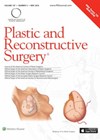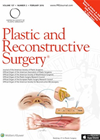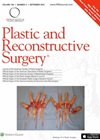Eduardo Morera Serna currently works in Otorhinolaryngology / Facial Plastic Surgery, Hospital Universitario Son Espases, Palma de Mallorca, Spain.
Eduardo studied medicine at the Facultad de Medicina Universidad Autónoma de Madrid, Spain 1989-1995. This was then followed by an ENT residence at the Servicio de Otorrinolaringología y Patología Cervicofacial, Hospital Universitario La Paz, Madrid, Spain from 1997 to 2001, and fellowships in Oral and Maxillofacial Surgery and Facial Plastic Surgery in Bogotá, Colombia.
He is a Vocal of the Facial Plastic Surgery section of the Sociedad Española de Otorrinolaringología since 2004, a member of the European Academy of Facial Plastic Surgery, the Sir Charles Bell Society, the European Board of Otolaryngology (2011) and a Board-Certified Facial Plastic Surgeon (IFFPSS) since 2012.
He is also Director of six international courses on Facial Plastic Surgery, faculty in more than 30 national and international course, author of 18 book chapters and 20 articles and author of the 2012 book Cirugía Plástica Facial published by the Spanish Society of Otolaryngology.
His fields of expertise include facial plastic surgery: rhinoplasty, reconstruction, facial palsy, cosmetic surgery.
JOURNAL REVIEWED: Plastic and Reconstructive Surgery and JAMA Facial Plastic Surgery – Oct 2013 (ongoing)
Latest Contribution
What is the best graft for nose surgery in the long-term?
The authors of this paper performed an experimental study on long-term histological changes in different grafts implanted subcutaneously in 25 New Zealand white rabbits. Ear cartilage, rib cartilage, autologous fascia, fascia allograft, diced rib and ear cartilage wrapped in autologous...
Long-term outcome of the Turkish delight graft
The author of this study shows the long-term results of the Surgicel-wrapped diced cartilage, better known by rhinoplasty surgeons as the Turkish delight (TD) graft. The graft, originally described by the author of the article, was meant to be used...
Treatment of vertical alar discrepancy
This article explains the way to treat vertical alar discrepancy through alar crease and alar sulcus full-thickness incisions and advancement-rotation of the alar flaps. The authors divide the group of patients into three main categories depending on the vertical movement...






